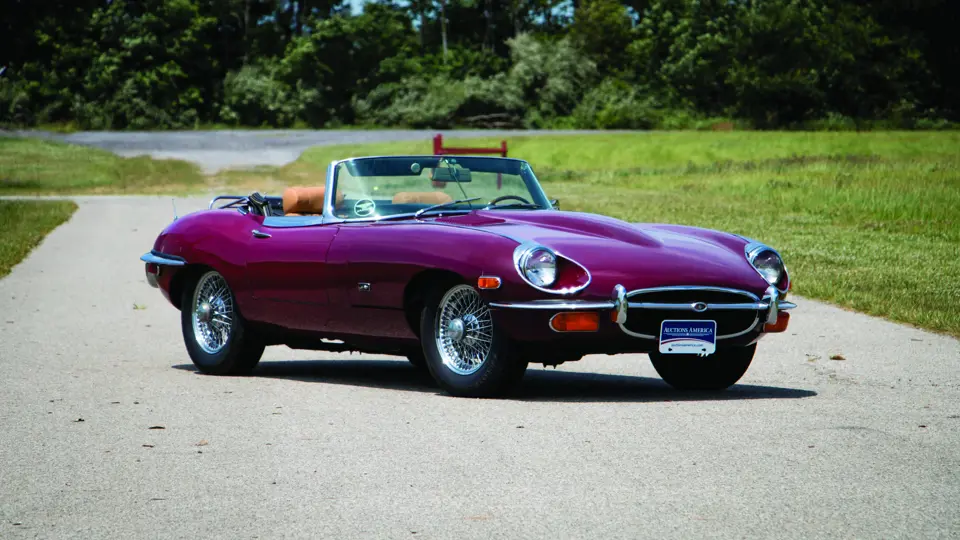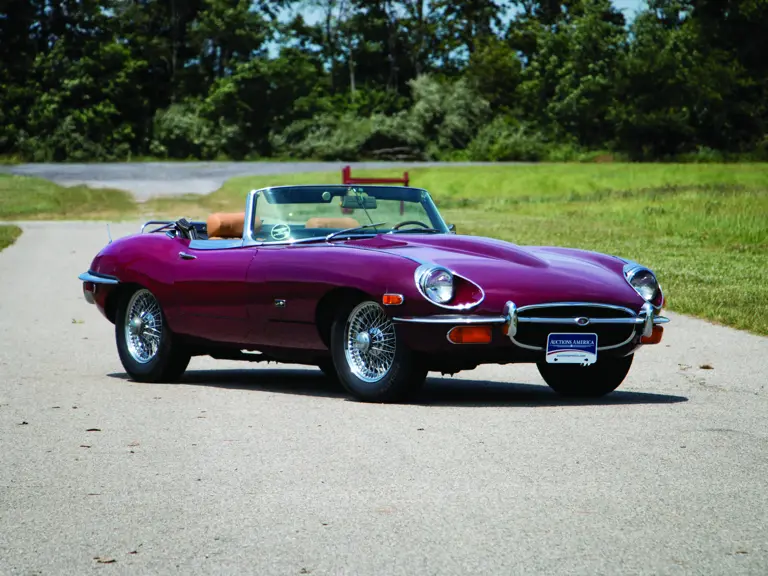
1971 Jaguar E-Type Series II 4.2
{{lr.item.text}}
$60,000 - $70,000 USD | Not Sold
{{bidding.lot.reserveStatusFormatted}}
- 4.2-liter, 246-hp inline six-cylinder engine
- Manual transmission
- Restored
- Knock-off wire wheels
- Four-wheel disc brakes
- Power steering
- Luggage rack
- AM/FM radio
- Smiths instrumentation
- Wood-rimmed steering wheel
- Highly-esteemed British sports car
This 1971 Jaguar E-type in Regency Red is a well-preserved, beautifully styled car with biscuit interior. The seats have been recently rebuilt by a renowned Jaguar supplier. The interior is pristine with original door panels and dashboard showing only slight signs of wear, while gauges and switches show no discoloration. The original equipment steering wheel is also in excellent condition.
The front and rear bumpers have an excellent fit and finish that show well. The headlights and taillights are presented in great condition with no reported hazing, fogging, or cracks. The original equipment wheels show very well and it appears to have the original Robbins top (the originality of the top has not been confirmed). The original Jaguar insignia is still intact in the front windshield and is in excellent condition.
The engine bay is a work of art with the Jaguar XKE Series II, six-cylinder 4.2-liter engine paired to a manual transmission. This is an exceptional Jaguar E-type that is a stunning example of a Series II convertible that is said by the owner to run great and is a thrill to drive.
This car has been in a private collection in Ohio for the last 10 years; prior to its new life in Ohio, it was purchased from Northshore Sports Cars in Lake Bluff Illinois. This 1971 Jaguar has been carefully stored and well maintained. This 1971 Jaguar E-type also has the original service manual and jack included. This Jaguar is ready to be proudly toured and displayed, and will make a wonderful addition to any collection.
Over time, experience and a changing worldwide market dictated many changes in the sublimely beautiful Jaguar E-Type. During the first seven years of the E-Type’s life, these changes were evolutionary and culminated in the 1968 release of the Series II models, representing a substantial redesign that foreshadowed many of the attributes of the final Series III V-12 E-Types that would soon enter production.
Federal regulations in the United States, Jaguar’s most important market, drove some of the Series II’s changes, including revised lighting and the shift to a pair of Stromberg carburetors in place of the three SU units of earlier E-Types. Externally, the air intake substantially increased in size, a change masked by larger, full-width bumpers that were matched at the rear to meet U.S. low-speed impact requirements. The well-proven 4.2-liter XK six-cylinder engine was little changed, although a higher-capacity water pump was fitted, taking advantage of the enlarged radiator air intake and better adapting the E-Type to warmer climates. The chassis got bigger Girling brakes with three-piston calipers at the front and two-piston calipers at the rear, while the interior now included reclining seats as standard equipment.
In short, the steady evolution of the E-Type meant that buyers of the Series II got a much better, more comfortable and reliable Jaguar—attributes that complemented its already well-established reputation for superior performance, handling, and appearance.


 | Auburn, Indiana
| Auburn, Indiana


